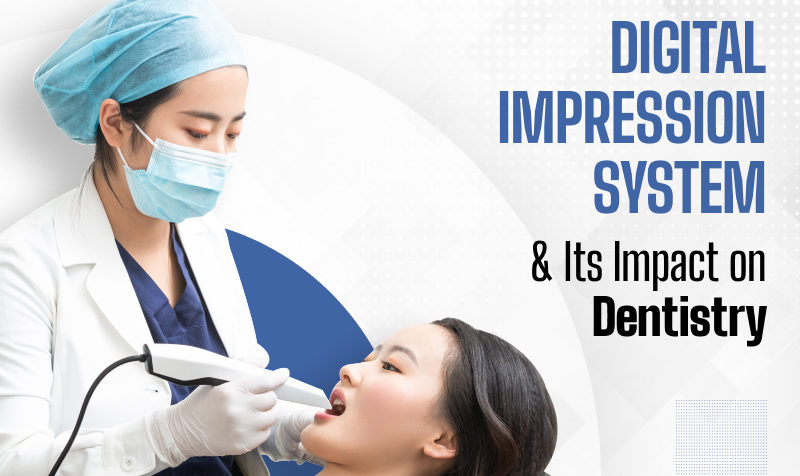The world of dentistry has been positively impacted by advanced digital impression systems that allow dentists to take real-time scans of the teeth and gums for better diagnosis. They capture clear and accurate impressions in minutes, which otherwise can take a lot of time with a traditional imaging technique. A digital impression system represents state-of-the-art technology allowing dentists to generate a virtual replica of the soft and hard tissues of the patients’ mouths. In doing so, the system uses optical scanning devices and lasers. The scanned images thus obtained are transmitted to a CAD system to create restorations thereby avoiding the need for stone models.
These devices are of two types; one that captures images of the teeth and gums as digital photographs and the other that captures images in the form of a live video. The ones using lasers use a concentrated source of light that is precise and safe and capture the details of the oral cavity without the patient having to hold onto unpleasant materials in his or her mouth. On the other hand, optical scanners need the teeth to be powder coated with a spray to ensure every part of the impression is recorded correctly.

How a digital impression system benefits doctors and patients
Digital impression devices such as a China intraoral scanner offer a host of benefits including interoperability to both doctors and patients.
Streamlined workflow: The digital scanning system eliminates barriers such as taking impressions using x-rays, patients’ holding onto distasteful materials, storing such molds in the dental clinic, and sending them to the laboratories to create crowns or aligners. The use of such a system minimizes delays, maximizes efficiency, and improves productivity.
Reduced costs: Restorations created by digital systems are often delivered at a lower cost than the ones created by traditional processes. The scanned images and patients’ data go into the CAD/CAM units of a laboratory thereby eliminating cost and time in converting patient information.
Higher accuracy: The China intraoral scanner transmits patients’ data in a universal format and eliminates issues such as data errors and gaps, which can occur when data need to be converted for CAD/CAM systems. This improves the accuracy of digital impressions when compared to the ones taken by a traditional system.
Faster TAT: Since there is no need to create models for restorations and the digitally scanned images are directly fed into the CAD/CAM systems present at the laboratories, the turnaround time is reduced.
Less data entry: The interoperability of a digital impression system helps the transfer of patients’ data among CAD/CAM software, intraoral scanners, practice management systems, and sundry dental systems. Here, there is no need to re-enter patients’ information thus safeguarding the same and saving time.
Easy integration: The seamless transfer of patients’ data between intraoral scanners, in-office mills, and design software helps streamline the fabrication of restorations. Besides, with multiple diagnostic tools for imaging such as digital x-rays, intraoral scanners, and others exchanging data seamlessly and having a standard format of data, the results are quick, accurate, and reliable.
Conclusion
The sooner dentists embrace the use of digital impression systems better they can benefit patients with streamlined workflows, higher efficiency, and better accuracy. A China intraoral scanner can make dental restorations affordable and qualitatively superior.






